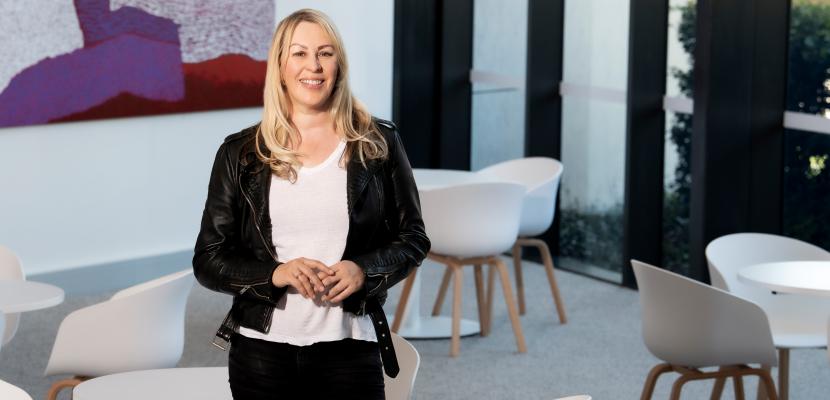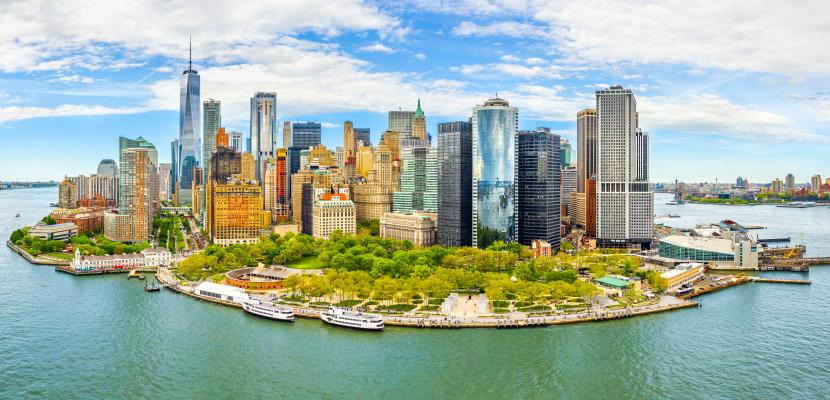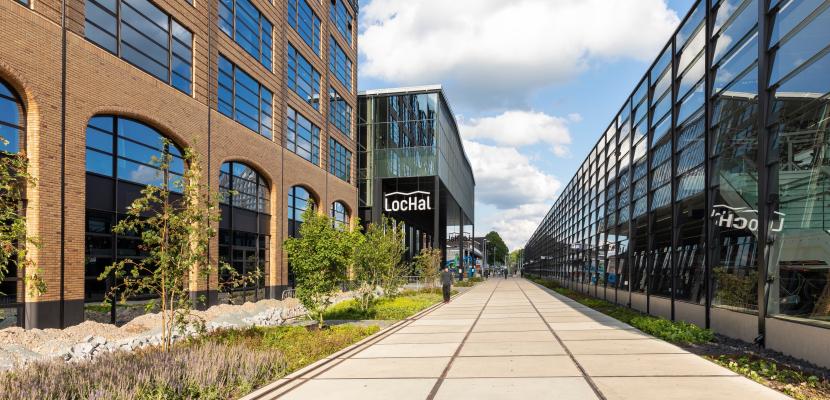
Amongst the fraught arguments on post-pandemic work flexibility is an underlying fear. What will happen to our cities if workers only go to the office a few days a week?
Humans have flocked to cities for centuries prior to the industrial-age birth of the modern office tower.
“A great city is an inventory of the possible.” wrote Rene Descartes in the 17th century.
A city is a place where the ability to create a range of different futures for ourselves is made manifest.
But a city that consists largely of closed-off office buildings broken up by chain food outlets is unlikely to fulfill Descartes’ ambition. And it’s also very boring.
A city primarily designed for everyone to commute in and pour out again at the end of the day doesn’t make for a very interesting or sustainable place.
The last few years gave us a one-in-a-100-year opportunity to redesign work. It seems like as good a time as any to apply this new lens to our cities.
Making these changes requires us to adopt different thinking and to understand the intricacies and interrelationships that form the fabric of a place.

Reinventing New York’s Financial District
This shift in how we think about our cities is highlighted in the changes in New York’s Financial District after 9/11.
Before 9/11 more than 60 percent of commercial space was occupied by finance, trading, and banking firms, with the remainder taken up by real estate, insurance, and government relations. No one lived there.
After the last building emptied out of its busy occupants, it fell quiet. Monitors dimmed low along with the mood of an area that was lit up only as throngs of suits pressed through the doors of office buildings the next morning.
In the rebuild, new possibilities emerged. Companies sought to avoid the risk that came with clustering in one location. New independent retail and restaurants emerged. Families moved in. There is a dog walking club that meets each morning in front of the stock exchange. Children walk to school.
Today, more than 75,000 people live in the Financial District and residents talk about its village-like feel.
A flourishing city must be an interesting destination.
This fundamentally requires different types of people doing different things.
Sameness is bad for innovation
At a psychological level, we are biologically disposed to seek out locations where there is some complexity and some interest, and where messages are conveyed in different ways.
Sameness is very boring to our brains. It’s also important for creativity.
Mixed-use, interesting, multi-disciplinary spaces and experience matter greatly for innovation.
Innovation is an iterative, and partly non-conscious process.
There is a reason why ideas and solutions spring into our minds while we are going for a walk or taking a shower.
Cities act as a cognitive scaffold, playing a vital role in this process. In the new world of work, the whole city is our workplace.
Where we work should encompass a range of different spaces for reasons I wrote about here.
Taking in a new exhibition in a museum during lunch, taking in a music performance, overhearing conversations between artists, and experiencing pop-up installations give us new ideas or new perspectives.
In The Death and Life of Great American Cities, Jane Jacobs wrote about these ideas in the concept of the ‘sidewalk ballet’, “The ballet of the good city sidewalk never repeats itself from place to place, and in any one place is always replete with new improvisations.”
An innovative study supported Jacobs’ propositions, finding that, “The best-performing cities in terms of knowledge spillovers and economic performance are those that are not only home to, and attract, agentic people, but also empower these people by means of a physical and industrial city landscape that enables them to act in more innovative and entrepreneurial ways.”
The influences of our physical environments on our cognition are significant.
Research has shown that thinking is not just a product of the mind, as long thought, but also involves the body. Somatic experiences are integral to mental processes.
Having a variety of interesting spaces and places that are experienced in a city environment is critical.
Corralling everyone in a commuter ring office park at their desk all day and then calendaring meetings with innovation as an agenda item is a bad idea.

Third places, treehouses, and designing with delight in mind
Since Ray Oldenburg officially coined the term ‘third place’ in 1989, our drive to find accessible, social, technologically enabled, and welcoming places to work within the urban environment continues unabated.
From urban treehouses to a coworking group at the Met in New York, there is no shortage of wonderful examples to inspire our thinking.
A groundbreaking project in New York City in 1989 was one of the first to formally experiment with ways to activate multiple urban public spaces as worksites.
The project called Breakout! aimed to draw on the platforms of mobile technology and location-aware social networks to support cross-organisational and interdisciplinary collaborations.
Despite the technology underpinning, a key aim of the project was to increase serendipity and face-to-face connection.
The 2015 London Festival of Architecture featured a pop-up tree office equipped with power and internet, designed to encourage people to work out of the office in the landscape of the city.
Pop-ups such as these are important. Covering a broad spectrum including art, retail, food, and craft, they are intended to highlight alternative perspectives, gather feedback in real-time, and test potential urban design improvements.
Examples of this type of thinking, of starting with putting people at the centre, of designing for delight, continue to pop up around the globe.
Some of these embrace the concept of a public living room, a place where people can gather, retreat, work, play, or just enjoy amenity.
Tokyo’s Daikanayama Tsutaya bookstore encourages patrons to relax and enjoy the publications in a range of comfortable spaces, silent rooms with free access to study, and a paid coworking space. There is even a bar.
You can also sleep in the bookstore for their ‘Late Night Inspiration Trip’ experience. And in the cookbook section, books are displayed along with the ingredients to encourage both reading and cooking.
LocHal in Tilburg, Netherlands is an award-winning example of the mixed-use public living room concept. Housed in a refurbished former locomotive shed, it combines a coworking space, cafe, library, and cultural institutions.
Café Dawn employs disabled workers as baristas, food and beverage servers and receptionists remotely operating robots from their home or hospital.
The robots have photos of the employee who uses their voice to communicate with customers as well as make and serve drinks.
Mikako Fujita who has ALS and works at Dawn from her home, tastes the coffee beans used in the cafe so she can recommend the best fit for her customers.
“I can move the barista robot just like my hands and I feel as if I myself am dripping coffee,” she says. “I feel saved from a sense of loneliness when I stay connected with people outside, doing something for them and seeing their smiles.”

Tokyo’s Ikebus, a 10-wheeled box with a cheery face and eyelashes that spell out its name, is designed around how people build their relationship with a city from a young age.
The bus was born from reframing a problem in Ikeburo. While over 6.8 million passed through the main transport hub every day, few went beyond the concourse.
Ikebus was designed to provide cheap transport to connect and delight its passengers.
Each bus has a different handmade interior. It’s neither the cheapest nor the fastest solution. But as famed designer of the Ikebus Eiji Mitooka, who has designed everything from boats to bullet trains noted, getting people to be engaged and delighted requires a different approach.
By creating a bus that is a joyful part of the experience of Ikeburo, the project has achieved the outcome of engaging commuters in the local area instead of just passing through it.
Coco Desk provides workspaces for individuals within metro stations and building lobbies in Tokyo.
The booths are enabled with a comfortable desk and chair, wi-fi, temperature control, sound insulation, and screens to facilitate virtual meetings.
These are spaces and services that embrace delight and foster unexpected experiences.
They ground the idea of hospitality as a fundamental part of the experience.
They provide a window into how we can rethink the thriving city beyond the office tower and daytime commuter paradigm.
Here’s to many more of them.
Dr Libby Sander is an expert on organisational behaviour, the future of work, and the design of the workplace and its influence on thinking, emotion and performance.